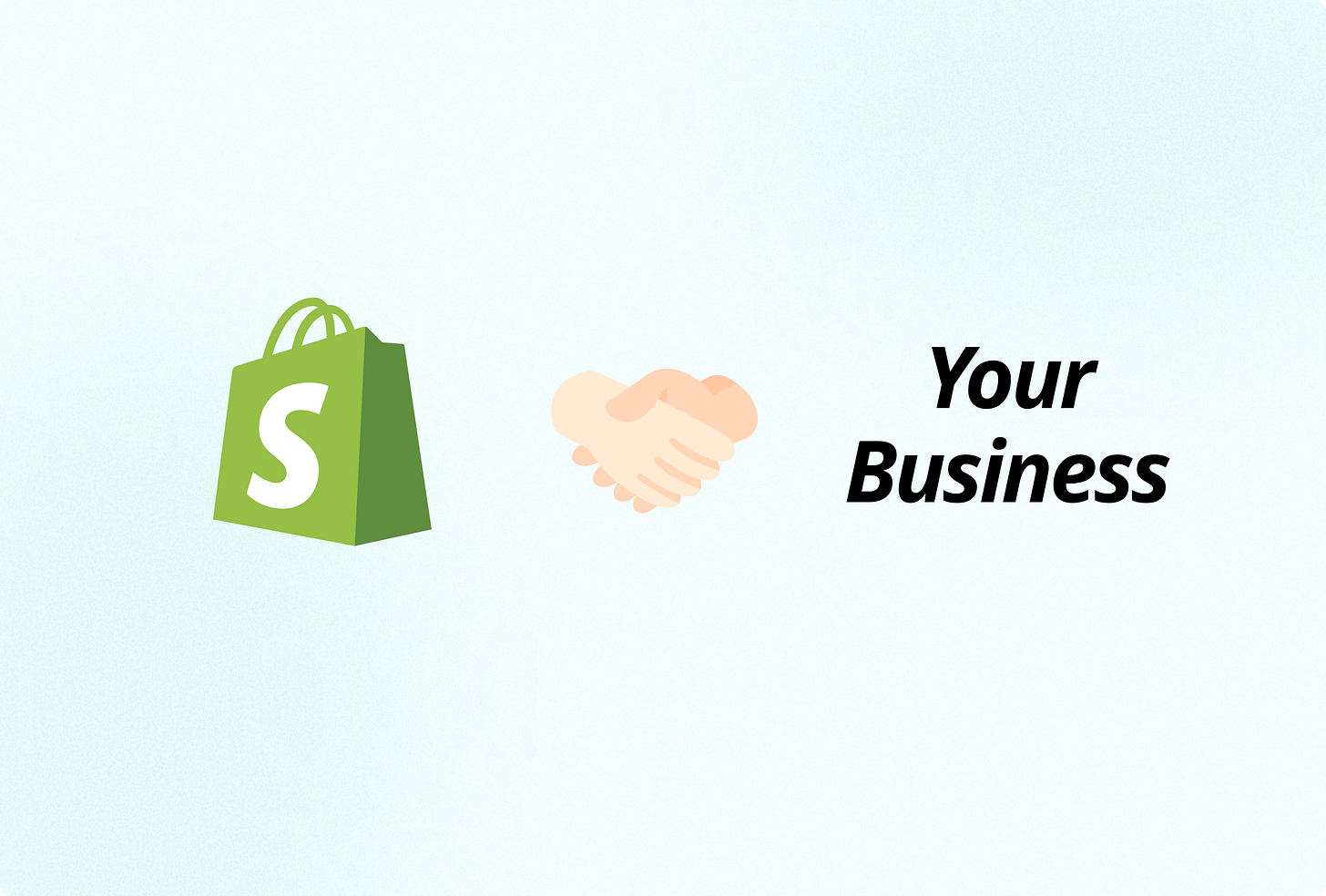Most Platforms Charge Their Customers. Shopify Shares the Risk.
What if the fairest way to build a business is to only grow when your customers do? A look at Shopify’s brilliant revenue model—and why more companies should follow it
Reading time: 4 mins
Don’t you just hate it when you can’t find a particular song, but you know how it sounds? You keep humming, but you just can’t find it. Well, that happened to me for this entire week searching for a particular episode of Lenny’s podcast.
Nevertheless, I have something super interesting to talk about. For the first time ever, I had a feeling that a particular business, has a fair revenue model.
I’m talking about Shopify. It wasn’t the first time I’d heard about how they work—but something clicked differently this time. I realized—Shopify only makes real money when its customers do.
Sure, they charge a basic subscription. But the real engine? It’s transaction fees.
They don’t just sell you software. They give you a platform, and then bet on your growth.
If your business sells more, they earn more.
If you don’t grow, neither do they.
That’s not just a billing model—it’s alignment.
Let’s get into it.
Loyalty is earned through alignment
Most platforms monetize usage.
You pay for seats, features, storage—even if your business isn’t growing. From a revenue standpoint, it's stable. But from a customer standpoint? It’s misaligned.
You're paying before you’ve succeeded. You're bearing all the risk.
And worst of all, there’s no real incentive for the platform to help you win.
Shopify flips that.
Its base plan is affordable, but the model scales only when the merchant scales. It’s not monetizing usage—it’s monetizing success. That’s not just fair. It’s smart.
It makes Shopify a stakeholder in your outcome, not just a tool in your stack.
Proof that this model works
In 2023, Shopify made over $7 billion in revenue. What’s even wilder? More than 70% of that came from merchant services—not subscriptions. That includes things like payments, shipping, capital, and apps—all built to help merchants sell more.
It’s proof that betting on your users’ growth works. You don’t need to squeeze value out of them—you grow with them.
That’s the beauty of this model:
It creates trust.
It builds loyalty.
It tells the customer, “We only win if you win.”
And maybe that’s the future.
More businesses should be designed not just to serve—but to scale with the people they serve. It’s more sustainable. More aligned. And in the long run, a whole lot stickier.
If you're building a business, here are 3 ways to move toward that mindset:
➔ Rethink your pricing. Charge less upfront. Let value grow with usage or outcomes
➔ Design for shared upside. Build tools that don’t just serve users—scale with them
➔ Measure success the way your customer does. Adopt their KPIs. When they win, make sure you feel it too
That’s what partnership looks like. That’s what makes me and many other consumers go “Wow, that’s fair. Here’s my money.“
If you’d like me to do a deep dive into Shopify’s business practices, drop a like.
I know I’ve been a little inconsistent lately, but I’m back. I’m reading quite a bit to bring you the best of tech, product, design and business.
If you’re a first time reader, hello! Thanks for reading. I’d love it if you considered subscribing. Makes my day, gives you something cool to read and think about every week.





